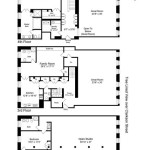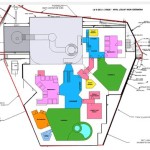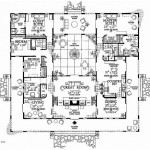House Ground Plan Drawings: A Comprehensive Guide
A house ground plan drawing serves as the foundational blueprint for any residential construction project. It provides a bird's-eye view of the proposed structure's layout at the ground floor level, detailing the arrangement of rooms, walls, doors, windows, and other architectural elements. This crucial document acts as the primary reference point for builders, architects, interior designers, and homeowners throughout the construction process.
Understanding the components of a well-drafted ground plan is essential. Typically, these drawings include accurate measurements of each space, the locations of plumbing fixtures and electrical outlets, and the intended use of each room. Wall thickness is also indicated, providing a precise representation of the building's footprint. Furthermore, external elements like patios, verandas, and attached garages are often incorporated into the plan, offering a holistic view of the ground level layout.
The purpose of a ground plan extends beyond simply visualizing the layout. It plays a critical role in ensuring efficient space utilization, optimizing traffic flow within the house, and complying with building codes and regulations. By providing a detailed schematic, the plan helps prevent costly errors during construction and facilitates effective communication between all stakeholders involved in the project.
Various types of ground plans cater to different needs and project stages. A preliminary ground plan, often created during the initial design phase, focuses on the overall layout and room placement. As the design progresses, a more detailed working drawing emerges, incorporating specific dimensions, materials, and construction details. Finally, an as-built ground plan documents the completed construction, reflecting any modifications made during the building process.
The benefits of having a well-designed ground plan are numerous. For homeowners, it provides a clear understanding of their future home, enabling them to visualize the space and make informed decisions about layout and design. It's an invaluable tool for discussing design preferences with architects and contractors, ensuring everyone is on the same page. This clear communication minimizes misunderstandings and contributes to a smoother construction process.
From a builder's perspective, the ground plan is an indispensable guide for accurate construction. It dictates the precise dimensions of walls, the location of openings for doors and windows, and the placement of utilities. This level of detail minimizes errors and ensures that the finished structure adheres to the approved design. Furthermore, a comprehensive ground plan can simplify material estimation and project scheduling, contributing to better cost control and timely completion.
Modern technology has revolutionized the creation and utilization of ground plans. Computer-aided design (CAD) software enables architects and designers to create highly detailed and accurate drawings. These digital plans can be easily modified and shared, facilitating seamless collaboration between different professionals. Furthermore, 3D modeling software can generate virtual walkthroughs based on the ground plan, providing clients with an immersive experience of their future home.
Beyond the core elements, several additional features can enhance the value and utility of a ground plan. Indicating the direction of north on the plan helps understand the natural light and ventilation patterns. Including furniture layouts within the drawing provides a better sense of scale and helps visualize the flow of movement within each room. Marking the location of fixed appliances, such as kitchen cabinets and bathroom fixtures, further enhances the plan's practical value.
Accessing and obtaining house ground plans can be achieved through various avenues. Architectural firms and design professionals create custom plans tailored to specific project requirements. Online resources offer pre-designed house plans that can be purchased and adapted. For existing homes, ground plans can often be obtained from local building authorities or through property records. It's crucial to ensure that any ground plan used for construction purposes is accurate, up-to-date, and compliant with all applicable building codes and regulations.
Different architectural styles influence the design and layout of ground plans. For example, open-plan layouts, popular in contemporary homes, prioritize spaciousness and seamless transitions between living areas. Traditional house plans often feature more defined rooms and hallways. Understanding the characteristics of different architectural styles can inform the design process and result in a ground plan that reflects the desired aesthetic and functionality.
The evolution of ground plans reflects advancements in building technology and changing lifestyle preferences. From simple hand-drawn sketches to sophisticated digital models, ground plans have become increasingly detailed and informative. As building practices continue to evolve and new technologies emerge, the role of the ground plan will remain central to the design and construction of residential spaces.
Accessibility considerations are becoming increasingly important in house design. Integrating accessibility features into the ground plan, such as wider doorways, ramps, and accessible bathrooms, ensures that the home can accommodate individuals with diverse mobility needs. Incorporating these features from the outset is crucial for creating inclusive and universally accessible living environments.
Sustainability is another key factor influencing modern house design. Ground plans can be optimized for energy efficiency by considering factors like passive solar heating and natural ventilation. The orientation of the house on the site, the placement of windows, and the inclusion of shading elements can all contribute to a more sustainable and environmentally friendly design. Integrating these considerations into the ground plan is crucial for minimizing the environmental impact of residential construction.

Floor Plans Types Symbols Examples

Floor Plans Types Symbols Examples

Floor Plan Creator And Designer Free Easy App

House Plans How To Design Your Home Plan

Easy Home Building Floor Plan Cad Pro

Floor Plan Creator And Designer Free Easy App

Draw Floor Plans In Half The Time Cedreo

House Plans How To Design Your Home Plan

Floor Plan Easy Example Simple Plans Design

Floor Plan Wikipedia








